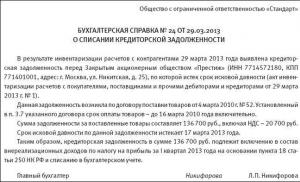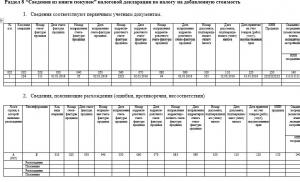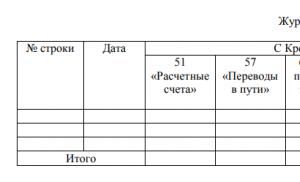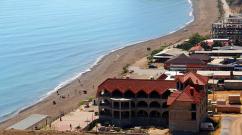8th Air Army. US Eighth Air Force Museum
The 8th Air Army was formed in June 1942 on the basis of the Air Force of the Southwestern Front as part of 10 air divisions (, , , , 269th fighter, , , 272nd bomber, 226th, 228th assault).
The combat path of the army began in the defensive battles of the troops of the South-Western in the Poltava, Kupyansk, Valuysko-Rossosh directions. From July to November 1942, the army took part in defensive battles near Stalingrad. Supporting the troops of the South-Eastern and Stalingrad fronts, the formations of the army carried out bombing and assault attacks on the enemy troops, fought stubborn air battles with the superior forces of his aircraft. In November-December 1942, the 8VA supported the troops of the front in the counteroffensive, participated in the air blockade of the encircled grouping of Nazi troops during the defeat of the enemy's Kotelnikovskaya grouping. At the beginning of 1943, the army, acting as part of the Southern Front in the Rostov direction, destroyed the retreating enemy troops on the roads, covered the advancing troops from the air, conducted aerial reconnaissance, and fought against suitable enemy reserves.
During the general summer offensive of the Soviet troops in 1943, its formations supported the fighting of the Southern (from October 20, 1943 - the 4th Ukrainian) Front while breaking through the enemy defenses on the river. Mius, the liberation of Donbass, Melitopol and the southern part of the Left-Bank Ukraine. In the winter of 1943/44, the 8VA supported the troops of the 4th Ukrainian Front during the liquidation of the Nikopol group of Nazi troops, ensured the regrouping and concentration of troops of the 4th Ukrainian Front near Sivash and Perekop before the start of the Crimean operation. Army pilots in April 1944, when forcing the Sivash and breaking through the Perekop defensive line, delivered bombing and assault strikes on the enemy’s concentration centers, and after breaking through its defenses, they supported the troops of the front during the offensive deep into the Crimean Peninsula, the assault on Sapun Mountain, the liberation of Sevastopol, and the liquidation of enemy troops on Cape Chersonese, attacked enemy ships in the Black Sea. From July 16 to August 3, 1944, as part of the 1st Ukrainian Front, she participated in the Lvov-Sandomierz operation.
In August 1944, the army was transferred to the newly formed 4th Ukrainian Front and supported its troops in overcoming the Carpathians and liberating Transcarpathian Ukraine from Nazi troops. In January 1945, the VA, as part of the 4th Ukrainian Front, fought during the liberation of Czechoslovakia and the southern regions of Poland, and took part in the Moravian-Ostrava operation. The army ended its combat path with participation in the Prague operation and the liberation of the capital of Czechoslovakia from the enemy. During the war, 8VA made over 220 thousand sorties. Thousands of army soldiers were awarded orders and medals. The most courageous were awarded the title of Hero of the Soviet Union, and
Base relevance: 2019.08.19
To use "KLADR" - Classifier of Addresses of the Russian Federation on the site, we obtain up-to-date data from the State Register of Addresses of the Federal Tax Service of Russia.
- Code KLADR: 34000001000047600
| House spacing | Postcode | Okato code | tax code |
|---|---|---|---|
| 1.10a, 11.11b, 12.14.14a, 15.15a, 16.19.19b | 400137 | 18401365000 | 3443 |
| 20.21a, 22.24.26.26a, 28.28b, 28d, 3.30.32 | 400137 | 18401365000 | 3443 |
| 23a,27,27a,29,31,33,33b,33d,35,35a,35e | 400117 | 18401365000 | 3443 |
| 28a | 400052 | 18401365000 | 3443 |
| 32a,34,36,38,38a,38g,5,6,6a,6b,7,9,9a,9e | 400137 | 18401365000 | 3443 |
| 37,37a,37b,39,40,41,42,43,44,44a,44d,45 | 400117 | 18401365000 | 3443 |
| 46.46b, 47.47a, 47aster1, 47b, 47d, 47k, 48.48a | 400117 | 18401365000 | 3443 |
| 48g,48d,48str1,48str2,50,50ast2,52,52a | 400117 | 18401365000 | 3443 |
| 53a,54.54b,54d,56.56a,58.58a,58d,66.66a | 400117 | 18401365000 | 3443 |
| 66str1 | 400117 | 18401365000 | 3443 |
"KLADR" - Classifier of addresses of the Russian Federation
Entered into force on December 1, 2005 by order of the Federal Tax Service of Russia dated November 17, 2005 No. SAE-3-13 / [email protected] The current version of the database is 4.0.
The Russian address classifier was developed by the FSUE GNIVTs of the Ministry of Taxes and Communications of Russia and is intended for use at automation facilities of the Ministry of Taxes and Communications of Russia and the Ministry of Communications of Russia.
A lot of time has passed since the advent of the Russian Address Classifier (KLADR). At first, its development was determined by rather narrow goals. Its implementation in the tax authorities and in the FIU was also not easy. Currently, interest in KLADR has greatly increased. This is explained by the fact that there was a need to create the Federal Information Address System (FIAS), which should be based on something. It turned out that, despite the fair criticism of the quality of filling KLADR, nothing better has been invented in 20 years.
The site provides information according to the RF address classifier. All codes - postal code, OKATO code and inspection code of the Federal Tax Service of the Russian Federation, are presented as they are in the original KLADR database located on the website www.gnivc.ru
Attention! The postal code, OKATO code and tax inspection code of the Federal Tax Service of the Russian Federation obtained using this site are for reference only. The site is not responsible for possible losses and undesirable consequences, as well as lost profits incurred as a result of using the information obtained on this site.
To obtain a postal code, OKATO code, tax inspection code of the Federal Tax Service of the Russian Federation, you should contact the appropriate competent state body of the Russian Federation.
Candidate of Historical Sciences,
Associate Professor of the Department of the History of the Fatherland,
GOU VPO "Chuvash State
Pedagogical University.
Soviet aviation in the battle for Stalingrad
(on the example of the combat work of the 8th Air Army)
During the Battle of Stalingrad, according to a number of researchers, including foreign ones, German aviation suffered its first crushing defeat. After that, the Luftwaffe could no longer achieve the advantage that was observed in the summer of 1942. The 8th Air Army (VA) played a significant role in the battles for air superiority.
In April 1942, the General Staff of the Air Force proposed to the Headquarters to form air armies based on disparate aviation units, which had a number of advantages, the main of which was the centralization of air force control. The strategically correct proposal was approved by the country's top leadership and four VAs were formed in May. On June 11, the Air Force of the Southwestern Front, together with the arrived reserves, was transformed into the 8th VA, whose commander was appointed the thirty-year-old Hero of the Soviet Union, Major General Timofey Timofeevich Khryukin (). The young commander had extensive military experience: he received his first award (the Order of the Red Banner) for fighting in the skies of Spain, T. Khryukin became a Hero of the Soviet Union in 1939 for completing assignments in China, in the Soviet-Finnish war he was awarded the second Order of the Red Banner. At the age of 30, he becomes a major general of aviation, having more than 100 sorties to his credit.
Soviet aviation in the battle for the sky of Stalingrad was opposed by the aircraft of the 4th German Air Fleet, commanded by Wolfram von Richthofen. The first formation of the 8th VA included 10 air divisions (about 450 aircraft), while the enemy had more than a twofold superiority - about 1000 aircraft, of which there were only 3002 fighters. In July, Khryukin's army received another 10 fighter, 9 attack and 3 bomber regiments (about 200 aircraft), but there were still not enough forces. In such a situation, Soviet aviation suffered heavy losses. German fighters (FV-189, Me-109, Me-PO), operating in groups of up to 12-20 aircraft, relatively easily hit single-seat attack aircraft Il-2, I-16 and British Hurricanes. In air battles, enemy fighters acted in pairs, layered in height and attacking from above and to the tail. Fire was opened by the enemy from a distance of 100-150 m, which ensured the accuracy of the hit. The Germans also widely practiced "free hunting", which consisted in intercepting and destroying individual Soviet aircraft, especially Po-2s, forcing the latter to switch to flying at dusk, at night and at dawn. At the same time, Soviet fighter pilots were not fully prepared for battles with such a serious enemy. The lack of sufficient flight training and elementary indiscipline affected3. In the air, the pilots had little control over the situation, neglected signals from the ground and maneuver, interaction in and between pairs was not worked out. So, on October 28, 1942, a group of six Yak-1s of the 287th IAD, covering our troops in Stalingrad, entered the battle with two Me-109Gs. The battle was crowded, without sufficient caution, separation in height, the commands of the guidance point were not carried out, as a result of which one Yak-1 was shot down4. Unlike the German aces, our pilots opened fire to kill, including on bombers, from long distances, which was ineffective. Uncertainty in their own strength forced the fighters to descend to a height of up to 100 m, while losing the initiative of vertical maneuver. Shortcomings were also observed in the actions of the bomber and assault aircraft of the Soviet Air Force. The command of the 8th VA stated poor flight, inability to maneuver, poor training of shooters and organization of fire interaction in the group. So, on December 13, 1942, six Pe-2s, accompanied by four Yak-1s, were attacked by six Me-109Gs and, despite superiority, one Pe-25 was lost.
In the summer-autumn of 1942, air battles were so bloody that, on average, an aviation regiment was sent for reorganization after 2-3 weeks of fighting, an attack aircraft managed to make 10-15 sorties before it was shot down. Particularly fierce fighting began in mid-July, when enemy troops launched a direct attack on the city. German bombers, who had previously suppressed the defenders' air defenses, allowed themselves single attacks on targets. These days, the tension in the fighter regiments amounted to 7 sorties, in the assault regiments - 4 sorties per aircraft per day. On August 23, German aviation made the strongest raid on Stalingrad: about 2,000 sorties were made that day, as a result of which the city turned into ruins. It should be noted that the commissar of the 926th IAP of the 220th IAD of the 8th VA, a native of the village of Lebedkino, Morgaushsky district of the Chuvash ASSR, Hero of the Soviet Union, took part in the heavy August battles. On August 19, while conducting an air battle against twelve German Me-109 fighters, he shot down one enemy aircraft in pairs and, wounded, dragged the Yak-1 to the front line6.
During September, enemy aviation undertook 17,300 sorties, reaching maximum figures. In order to weaken the bombing attacks on troops in the Stalingrad region, an operation was developed to destroy enemy aircraft at airfields west of the city, which was carried out at the end of October mainly by the forces of the 8th VA with the support of long-range aviation. As a result, it was possible to significantly reduce the activity of the Luftwaffe: if in October there were 59 thousand enemy aircraft sorties, then in November there were 31 thousand.
Simultaneously with the build-up of the air force near Stalingrad, Soviet aviation began to modernize technically, receive new combat vehicles (La-5) and ammunition. Thus, according to the order of the People's Commissar of Defense dated 01.01.01, an instruction was put into effect for controlling, warning and guiding aircraft by radio, which made it possible to accelerate its widespread introduction and application. The summer-autumn defensive battles gave the pilots the opportunity to gain experience in air battles. The tactics of fighter combat were noticeably enriched: battle formations were established when performing certain tasks, a new form of attack was introduced in vertical maneuver, and radio communications began to become widespread. The accumulation of experience was also evidenced by the frequent appeal of fighters to "free hunting". A new tactic of operating attack aircraft from medium altitude with the transition to a dive was born and fully justified itself. Such actions made it possible to significantly reduce losses among attack aircraft. Also, innovations in her work could include the conduct of an active defensive battle with enemy fighters, the interception of enemy bombers by attack aircraft, "free hunting" and reconnaissance in the German rear. The experience of the Stalingrad battles required the introduction of a two-seat cabin for the Il-2, improved weapons and equipment. Po-2 light bombers found significant combat use, which showed good results in covering river boats that ferried troops and cargo for the 62nd Army across the river. Volga. Using bombs and the ShKAS machine gun, Po-2 successfully fought against anti-aircraft artillery, hit searchlights, enemy vehicles and infantry. In general, the level of tactical training of commanders and flight personnel has significantly increased, navigational, bomber and fire training of air units has increased. At the same time, shortcomings in the combat work of Soviet aviation persisted.
To increase the effectiveness of the combat work of the 8th VA, its commander did a lot. By his order, for the first time near Stalingrad, a system of aviation control points was deployed in battle: ground forces were equipped with aviation observers with radio stations, which corrected the actions of aircraft. His decisions also include the organization of 32 false airfields, which were periodically bombed by enemy aircraft, the formation of the aces of the 9th Guards and 434th Fighter Regiments, whose pilots became Heroes of the Soviet Union in battles with the elite enemy formations "Udet" and "As- Peak".
During the counter-offensive near Stalingrad, a successful air offensive was carried out at the operational-strategic level. According to the developed operation, the forces of the 8th VA established a clear interaction with the 16th and 17th air armies and delivered a massive strike, which effectively contributed to the advancement of ground forces during the encirclement of German troops. The so-called "air offensive", developed in the 8th VA, later entered into practice and became one of the important pages in the history of military art.
In total, during the Battle of Stalingrad, units of the 8th VA made over 55 thousand sorties. The pilots participated in 1187 air battles, destroyed more than 1850 aircraft, including at airfields. The losses of the army itself amounted to about 1400 combat vehicles and 1116 pilots. Courage, courage, self-sacrifice of soldiers and officers of the air army were duly appreciated by the country's leadership: 25 aces became Heroes of the Soviet Union. For mass heroism, military units of the army were awarded guard ranks: 5 divisions and 15 regiments received their names. In addition, another 17 air regiments that were part of the 8th VA at various times during the Battle of Stalingrad received guards banners, and 1 air corps, 3 divisions and 8 regiments received the honorary name "Stalingrad". The commander of the 8th VA himself was awarded the Order of Kutuzov, I degree, for his skillful and courageous leadership of the unit's combat operations during the Battle of Stalingrad.
1 See for example: Hayward, Joel S. A. Stopped at Stalingrad: The Luftwaffe and Hitler's Defeat in the East, . Lawrence: University Press of Kansas, 19p.
2 Collection of combat documents of the Great Patriotic War. Issue. 7. - M.: Military publishing house of the Ministry of the Armed Forces of the USSR, 1948. - S. 9.
3 For details, see: Smirnov, A. Combat work of Soviet and German aviation in the Great Patriotic War. - M.: ACT: ACT MOSCOW: Transit-book, 20s.
4 Collection of combat documents of the Great Patriotic War. Issue. 7. - S. 13.
6 Mikhailov, Chuvashia in the battle for Stalingrad // From the history of Chuvashia in the Soviet period. Sat. articles. - Cheboksary: NII YALIE under the Council of Ministers of the Chuvash SSR. - S. 84-85.
Request
to participate in the conference “Battle of Stalingrad. A look after 65 years"
2. Place of work. State Educational Institution of Higher Professional Education “Chuvash State Pedagogical University named after I.I. »
3. Position. Deputy Dean for educational work of the Faculty of History
4. Academic degree, title. Candidate of Historical Sciences, Associate Professor of the Department of the History of the Fatherland
5. Address. Chuvash Republic, Cheboksary, Lenin Ave., 18A, apt. 17
6. Phone. Work - (8352), home - (8352)
7. Email. [email protected] yandex.en
8. Title of the report. "Soviet aviation in the battle for Stalingrad (on the example of the combat work of the 8th air army)"
 |
Civil aviation in Russia
air transport - yesterday, today and tomorrow |
| |
Since the spring of 1944, the US 8th Air Force was temporarily removed from strategic missions and, together with the RAF Bomber Command, was reoriented to other targets, having received orders to operate in a tactical role in support of the upcoming invasion of Europe. Only after that, she could again start strategic flights and strike at Germany.
On January 4, 1944, Boeing B-17 and Consolidated B-24 four-engine heavy bombers flew for the last time on missions as part of the VIII US Bomber Command. On this day, the 8th and 15th Air Armies were unified under a centralized command, namely as part of the new US Strategic Air Forces (USAF) with headquarters at Bushy Hall. In fact, this transformation was a reorganization of the US 8th Air Force. On February 22, VIII Bomber Command, in turn, was renamed the 8th Air Army, and it ceased to exist as the former corps.
General Carl Spaats returned to England to lead the USAF. Simultaneously, Major General "Jimmy" Doolittle transferred command of the 15th Air Force to Major General Nathan E Twighting and took over the new 8th Air Force at High Wycombe. Doolittle's approach was simple and direct: "Win the war in the sky and cut off the enemy on the battlefield." Spaats and Doolittle intended to engage the USAF in a program of well-coordinated raids on enemy installations as part of Operation Argument. The American efforts during the daytime were to be supported by the nighttime activities of the Bomber Command, the goal was to shred and crumble the German aircraft industry into small pieces as quickly as possible.
By mid-1944, the US 8th Air Force, in terms of manpower, had reached a strength of over 200,000 troops, rising to a peak; it included 40 heavy bomber groups, 15 fighter groups and four specialized support aircraft groups. This state of affairs allowed the 8th Army to send more than 2,000 four-engine bombers and more than 1,000 escort fighters on a permanent basis to several targets on a single day. Within the USAF as a whole command, the main contribution to offensive operations in the skies of Germany, nicknamed the "Big Week", was made by the 8th Air Force. Escort fighters targeted Luftwaffe interceptors as German fighter pilots attempted to shoot down bombers on missions to bomb the German aircraft industry. Eighth Army heavy bombers also flew deep into the heart of Germany, making daytime raids on Berlin.

Consolidated B-24D Liberator
491st Bomb Group/U.S. 8th Air Force, North Pickenham, Norfolk, 1944.
Each group of "Liberators" included one brightly painted aircraft to facilitate the formation of the formation of the group over the NC before the machines crossed the English Channel or the North Sea on their way to their assigned targets. Converted from "war-weary" vehicles, such unarmed aircraft, having completed the task of collecting the group, then returned to their airfield.
Crew: 10
Power plant: 4 x 895 kW. (1200 hp) Pratt & Whitley Twin Wasp radial piston engines Max speed: 488 km/h Range: 1730 km Service ceiling: 8540 m Dimensions: Wingspan 33.53 m; length 20.22 m; height 5.49 m Weight: 32,296 kg curb
Armament: 1 (usually 3) x 12.7 mm machine gun in the nose, plus 2 x 12.7 mm machine guns in the dorsal, tail and retractable ball turrets; 2 machine guns onboard placement to the tail from the midsection; up to 3629 kg of bombs

Boeing B-17F Flying Fortress
388th Bombardment Group/US 8th Air Force, 1944.
This B-17F landed on February 29, 1944 at Rinkaby in neutral Sweden and was later used by the country as a 14-seat passenger aircraft with the appropriate identification marks. So from October 6, 1944, a combat aircraft converted into a civilian transporter began to serve peaceful purposes.
Crew: 8-10
Power plant: 4 x 895 kW. (1200 hp) Wright Cyclone radial piston engines Max speed: 475 km/h Range: 2071 km Service ceiling: 10,975 m Dimensions: wingspan 31.6 m; length 22.8 m; height 5.85 m Weight: 25,400 kg curb
Armament: 12 x 12.7 mm machine guns; 7983 kg of bombs
1st AVIATION DIVISION (MAY 1945)
Part of Group Headquarters
1st Bomb Wing Bassingburn 91st, 381st, 398th Bombs. gr.
40th Bombs, Turley Wing 92nd, 305th, 306th Bombs. gr.
41st Bombs, Molesworth Wing 303rd, 379th, 384th Bombs. gr.
94th Bombs, Polebrook Wing 351st, 401st, 457th Bombs. gr.
67th fighter. Walcot Hall Wing 20th, 352nd, 356th, 359th, 364th Fighter. gr.
tactical raids
Prior to the Allied invasion of France in June 1944, heavy bomber groups from the 8th Air Force carried out tactical raids in preparation for, and then providing tactical support for, allied ground forces in the invasion area and further inland from the beachheads. Aircrews also assisted in the landing operation to storm Arnhem in the Netherlands in September 1944, and also attacked German ground forces during the "Battle of Wedging" at the end of the same year.
Such missions, however, came at a high cost to personnel, and 50 percent of US Air Force casualties in World War II came from the 8th Air Force: 26,000 killed and over 21,000 wounded. The contribution of the 8th Army, as well as the scope of allied operations in Europe, is best expressed in the fact that the Air Force personnel were awarded 17 Medals of Honor, 220 Distinguished Service Crosses and 442,000 Air Force Medals. 261 ace fighters served in the 8th Air Army, 31 of which recorded over 15 downed enemy aircraft.
Last raids
The last raid of the 8th Air Force took place on April 25, 1945, when B-17s raided the Skoda arms factory in Pilsen, Czechoslovakia, and B-24s attacked railway installations around Hitler's spare lair in Berchtesgaden, meanwhile The 15th Air Army attacked the mountain passes in order to prevent the attempts of German troops to get out of Italy through them.
After the end of the war in Europe, some combat units began to be transferred to the Pacific Ocean. The headquarters of the 8th Air Army arrived in Okinawa on July 16, 1945, but the 8th Army itself never served in the Pacific Theater of Operations.

"De-Haviyaend Mosquito" PR.Mk XVI
653rd Bombardment Squadron (Light) / 8th US Army Air Forces, Retreat, Norfolk, 1944.
This aircraft was used for meteorological reconnaissance and visual assessment of the results of bombing after raids. As befits a reconnaissance aircraft from aerial photographic units, the aircraft is painted blue with black and white "invasion stripes" on the lower surface of the fuselage, and its belonging to the US Army Air Force is expressed in state symbols, a red tail section and identification marks of the 653rd bomber squadrons on a horizontal stabilizer rudder.
Power plant: 2 x 1253 kW. (1680 hp) engine "Merlin 72" Max, speed: 668 km / h Range: 2400 km Service ceiling: And 000 m Dimensions: wingspan 16.52 m; length 12.43 m; height 5.3 m Weight: 6490 kg empty
It is connected not only with the history of the development of North America by the British in the 17th century, but is also directly related to the history of England in the middle of the 20th century. In Savannah, the history of the Eighth Air Force of the United States, stationed in England during World War II, began its history. And now there is an aviation museum -.
2. The history of the US Eighth Air Force began on January 2, 1942 at an air base in the city of Savannah, in the state of Georgia. On January 8, an order was received to create the American Air Forces in the British Isles (USAir Forces in the British Isles, USAFBI).
The 8th Air Force arrived in England in the summer of 1942, constantly increasing the number of battle groups and their range, going to ever more distant targets and inflicting strategic bombing of German territory. Equipped with long-range heavy bombers, the Eighth Air Force was tasked with destroying key German industrial targets. On August 17, 1942, B-17 bombers launched a heavy attack on the French city of Rouen, using the method of daytime targeted bombing for the first time.
By the end of 1943, American aircraft were attacking all military targets in German-held areas of Western Europe and in Germany itself. American planes bombed Berlin, Cologne, Magdeburg, Dresden, Mannheim, Hannover and Hamburg. As a result of the raids, the production of fuel and lubricants was sharply reduced, and the German Air Force suffered significant damage.
By mid-1944, the Eighth Air Force had become the largest armada in history. At the same time, more than two thousand four-engine bombers and a thousand fighters could rise into the air. For this power, the Eighth Air Force received the nickname Mighty Eighth - the Mighty Eighth.
By mid-April 1945, the strategic air war was over when units of the Eighth and Fifteenth Air Armies no longer had strategic bombing targets. The Air Force of the US Army was reoriented to supply the ground forces until the surrender of Germany.
In the Korean War, the strategic forces of the 8th Air Army did not take part, however, the 27th Fighter Air Group (27th Fighter Escort Wing) from the Eighth Air Force participated in the battles with Soviet MiG-15 aircraft.
In 1955, the strategic aviation fleet was updated - B-47 bombers and KC-97 tankers were replaced by B-58 and B-52 jet bombers and KC-135 tankers.
Since 1965, the Eighth Air Force took part in the Vietnam War, using bases on the islands of Guam, Okinawa and Thailand. In December 1972, the massive bombing of the cities of Hanoi and Haiphong (known as the Christmas Day Bombing Campaign) forced the North Vietnamese government to the negotiating table to end the war.
The US Eighth Air Force played a key role in the launch of Operation Desert Storm. Raised from Barksdale AFB, Louisiana, B-52 bombers attacked strategic targets in Iraq.
Currently, the Mighty Eighth is subordinate to the US Air Force Global Strike Command).

3. The museum is located very favorably - at exit 102 (Exit 102) of I-95, where the exhibit aircraft are visible from the road. In front of the museum, there is a large car park with shaded picnic tables and an indoor café, making the Eighth Air Force Museum not only an interesting place to learn about US aviation history, but also a convenient stopover on the way from Atlanta to the coast.

4. Soviet jet fighter MiG-17A with an improved VK-1A engine. The museum presents an aircraft with serial number 1589, armed with two NR-23 (23 mm) and one H-37 (37 mm) cannons. The VK-1 (RD-45) engine is the first Soviet turbojet engine to be mass-produced. Based on the British Rolls-Royce Nene engine.

5. These fighters took part in the Vietnam War, and in the Mighty Eighth Air Force Museum the aircraft is displayed in the colors of the North Vietnamese Air Force.

6. American fighter-bomber McDonnell-Douglas F-4C Phantom. Serial number 64-0815. These aircraft took an active part in the Vietnam War, where the Soviet MiGs were their main opponents in the air.



9. The main hall of the Museum of the Eighth Air Army.

10. Busts of heroes.


12. Posters from World War II.

13. Americans will always fight for freedom!

14. Traditional for museums, the catering point is decorated in the style of an English pub.


12. Military aircraft for the war years.


17. Continuity of generations of strategic aviation Mighty Eighth Air Force.

18. One of the elements of the interior of the museum is an open parachute.

19. In the souvenir department traditional for American museums, you can buy these badges.

20. And also such meaningful stripes.













